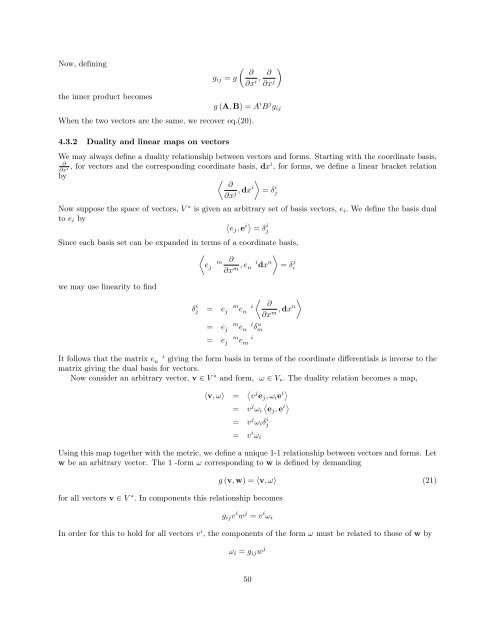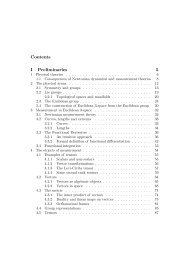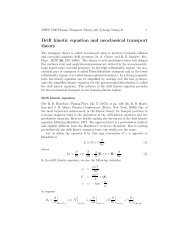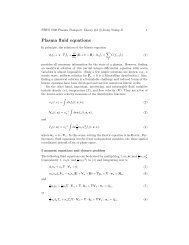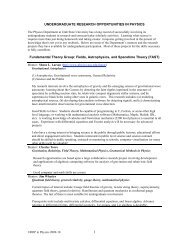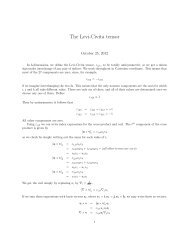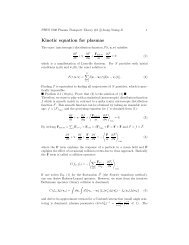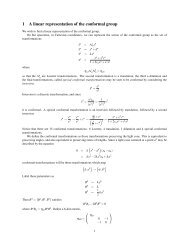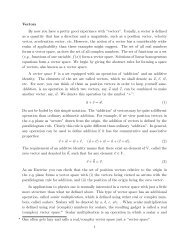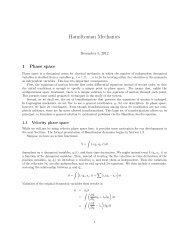Wheeler, Mechanics
Wheeler, Mechanics
Wheeler, Mechanics
Create successful ePaper yourself
Turn your PDF publications into a flip-book with our unique Google optimized e-Paper software.
Now, defining<br />
the inner product becomes<br />
( ) ∂<br />
g ij = g<br />
∂x i , ∂<br />
∂x j<br />
g (A, B) = A i B j g ij<br />
When the two vectors are the same, we recover eq.(20).<br />
4.3.2 Duality and linear maps on vectors<br />
We may always define a duality relationship between vectors and forms. Starting with the coordinate basis,<br />
∂<br />
∂x<br />
, for vectors and the corresponding coordinate basis, dx i , for forms, we define a linear bracket relation<br />
i<br />
by<br />
〈 〉 ∂<br />
∂x j , dxi = δj<br />
i<br />
Now suppose the space of vectors, V ∗ is given an arbitrary set of basis vectors, e i . We define the basis dual<br />
to e i by<br />
〈<br />
ej , e i〉 = δ i j<br />
Since each basis set can be expanded in terms of a coordinate basis,<br />
〈<br />
〉<br />
m ∂<br />
ej<br />
∂x m , e i<br />
n dx n = δ j i<br />
we may use linearity to find<br />
δ i j = e<br />
= e<br />
= e<br />
j<br />
j<br />
j<br />
m<br />
e<br />
n<br />
i<br />
m i<br />
en<br />
δm<br />
n<br />
m i<br />
em<br />
〈 ∂<br />
∂x m , dxn 〉<br />
i<br />
It follows that the matrix en<br />
giving the form basis in terms of the coordinate differentials is inverse to the<br />
matrix giving the dual basis for vectors.<br />
Now consider an arbitrary vector, v ∈ V ∗ and form, ω ∈ V ∗ . The duality relation becomes a map,<br />
〈v, ω〉 = 〈 v j e j , ω i e i〉<br />
= v j ω i<br />
〈<br />
ej , e i〉<br />
= v j ω i δ i j<br />
= v i ω i<br />
Using this map together with the metric, we define a unique 1-1 relationship between vectors and forms. Let<br />
w be an arbitrary vector. The 1 -form ω corresponding to w is defined by demanding<br />
for all vectors v ∈ V ∗ . In components this relationship becomes<br />
g (v, w) = 〈v, ω〉 (21)<br />
g ij v i w j = v i ω i<br />
In order for this to hold for all vectors v i , the components of the form ω must be related to those of w by<br />
ω i = g ij w j<br />
50


